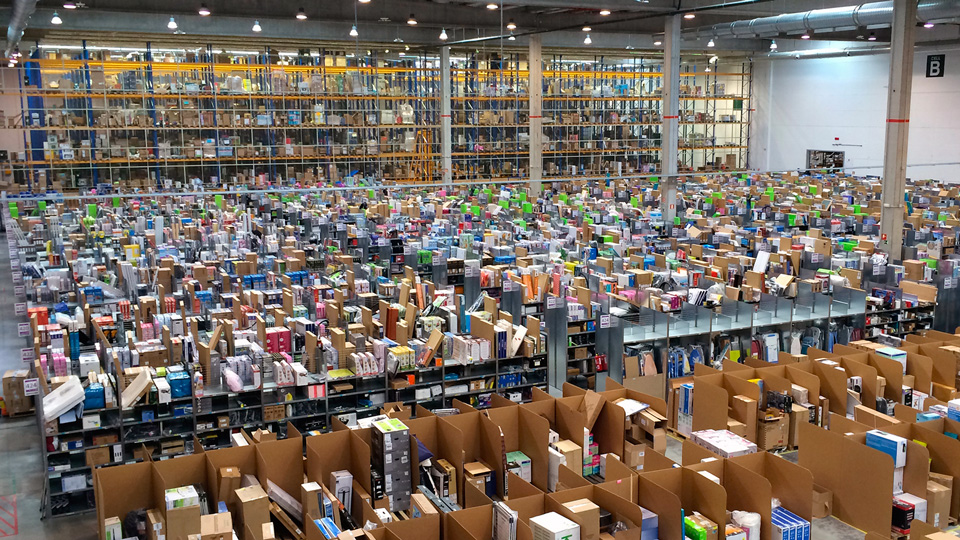
Whether you’re new to selling or you’re an e-commerce veteran, you know how important efficient fulfillment is to your business. Today’s customers expect their order to arrive ASAP, and exceeding their expectations is your ticket to Repeat Order Paradise. However, multichannel fulfillment is no walk in the park; that’s why Amazon offers the services of its fulfillment centers to merchants processing orders from any sales channel.
As you likely know already, Amazon has one of the largest and most sophisticated fulfillment networks in the world. They ship out orders from over a hundred fulfillment centers in the US alone, and have become well-known for their industry-leading delivery speeds. By leveraging the power of Fulfillment By Amazon (or FBA) for your multichannel fulfillment needs, you can save time, money, and get a leg up on the competition.
Advantages of Amazon Fulfillment
Amazon’s FBA service is pretty straightforward. Amazon merchants have the option to ship their inventory, in part or in whole, to Amazon fulfillment centers. When Amazon processes orders that contain the merchant’s items, they can then ship the order out of their facility instead of the merchant’s. Amazon will then charge the merchant a fee for the shipping and handling based on factors like the fulfilled items’ size and weight.
There are a number of advantages that make the costs of FBA worthwhile. For starters, the time it takes to get an order to your customer can be drastically reduced by FBA. Amazon has invested millions into making their fulfillment process as efficient as possible. It also helps that their distribution centers tend to be closer to the customer, lending to a much shorter transit time.
While goods sent through FBA often get to your customers faster, that doesn’t necessarily mean you need to pay more to make that happen. In fact, fulfillment may be less expensive through FBA than through your own means. This could be due to how close Amazon’s warehouse is to your customer, or due to Amazon’s heavily negotiated carrier rates. While this won’t be the case with every package shipped through FBA, it’s a nice win-win for you to save money while your customers get their goods faster.
Multichannel Fulfillment by Amazon
Amazon’s fulfillment services were intended to better manage orders purchased on Amazon’s own marketplace. However, Amazon has for years allowed merchants to submit orders for FBA that were placed on external sales channels, such as Magento or Shopify stores. When you submit orders to Amazon, they can ship the goods from your FBA inventory so that you don’t need to pick and ship the goods yourself.
The trick to multichannel fulfillment through Amazon is to pick out the orders that are a good candidate for FBA. These orders would to be partly or entirely made up of items that you have stocked at nearby Amazon fulfillment centers. The shipping addresses should also be closer to Amazon’s distribution centers than to your own facilities; otherwise, you’d be shipping the goods a longer distance than if you fulfilled it yourself.
Once you’ve filtered your orders down to the ideal FBA candidates, you can submit them to Amazon via a fulfillment order. This can be done through the Manage Inventory page in the Amazon seller dashboard. The ability to submit fulfillment orders is restricted to merchants with a Professional Selling Plan. However, thousands of merchants see that $40/month fee as a small price to pay for the power and flexibility of Amazon fulfillment.
Pros and Cons of Multichannel FBA
Amazon’s FBA service may sound like a perfect solution for your multichannel fulfillment needs. It’s fast, efficient, and often the least expensive fulfillment option available. However, there are some pros and cons to FBA that you need to take into account when integrating FBA into your multichannel operations.
While FBA may save time and money for many of your shipments, it could also be slower or more expensive (or even both) for certain orders. You’ll want to come up with a simple way to determine which orders to submit to Amazon and which to fulfill in-house. For example, you could log how much each SKU costs (on average) to fulfill via FBA, then use a shipping rate calculator to compare your own fulfillment to see which would be more cost-effective.
An often-overlooked detail in Amazon’s FBA service is the short order cancellation window. Once you submit a fulfillment order, you only have about 15 minutes to modify or cancel that order. After that, Amazon will have already begun processing the order for fulfillment. With that in mind, you’ll want to make 100% sure that the order should be submitted to FBA before doing so.
Last but not least is the prospect of submitting several Amazon fulfillment orders throughout your day. While submitting one order through Amazon’s interface is relatively easy, sending every one of your orders that you want fulfilled by Amazon can be a real chore. Save your time and sanity by using a third-party tool like SKULabs to automatically submit FBA orders to Amazon.
